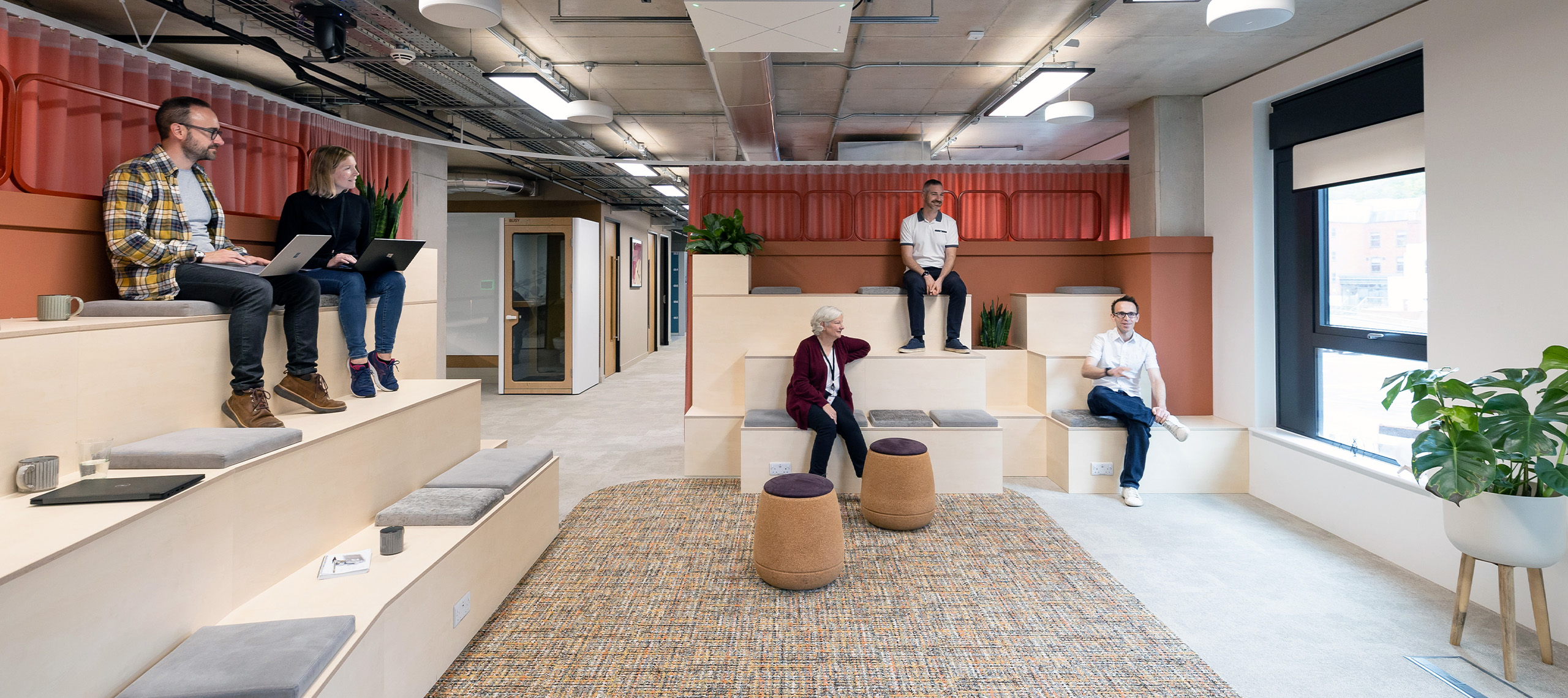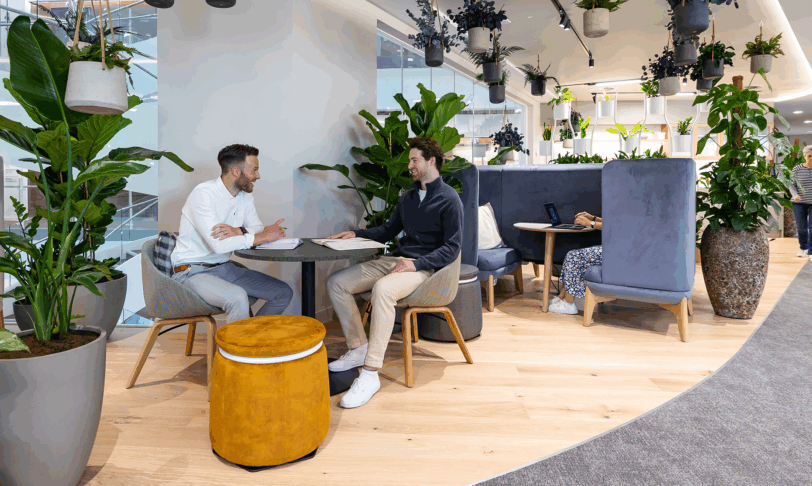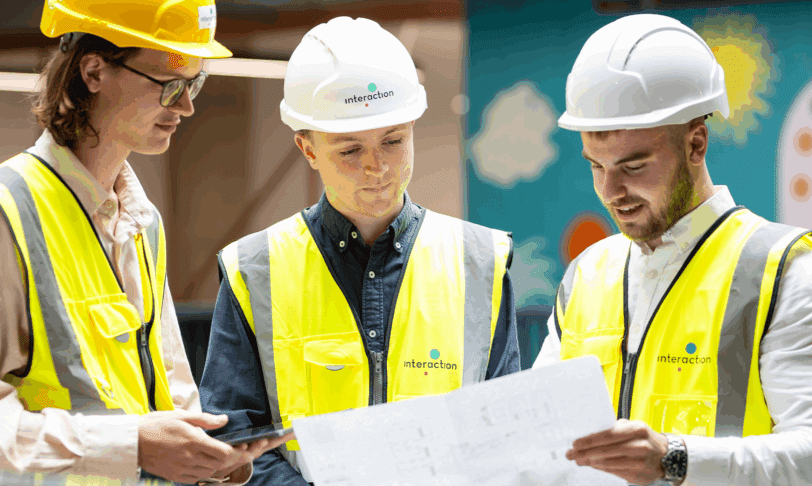Attracting the next generation: how workplace design helps win the talent war in aerospace and defence
The aerospace and defence sectors have long been synonymous with technical brilliance and security. But behind the scenes, they’re grappling with one of the biggest challenges of all: people.
The National Association of Manufacturers’ 2024 survey found that over 67% of companies identify attracting and retaining quality talent as a top business concern, with 77% of key decision makers in the sector concerned about a decline in defence capabilities and economic growth. The struggle to recruit could pose a long-term threat to innovation, security, and growth.
A perfect storm
Why is recruitment in this industry so tough?
For starters, the skills needed are highly specialised. Engineering shortages are widespread, with 48% of defence employers reporting gaps in engineering skills, alongside shortages in cyber, digital, and manufacturing expertise. University courses struggle to keep pace with the rapid technological advances aerospace and defence demand, leaving many graduates underprepared for the roles.
To make matters trickier, even those with relevant qualifications often find more attractive opportunities in higher-paying sectors like finance and tech, meaning the very candidates trained for aerospace and defence don’t always end up in the industry. Combine that with a looming wave of retirements – the European Space Agency predicts nearly 44% of their workforce will retire within the next decade – and it’s clear the pipeline is running dry.
Adding to the strain is the rapid pace of technological change. Digitalisation, AI, and computational modelling are fundamentally altering the skillsets needed on both the factory floor and in the design office. Mid-career professionals often require upskilling or reskilling to keep pace, and attracting talent from related fields with transferable skills has become crucial.
What new talent really wants – and needs
It’s easy to assume that new graduates and early-career professionals will simply “deal with” the strict security and windowless labs that aerospace and defence often require. But that’s not quite the case.
Studies show that 70% of new graduates prioritise workplace culture, wellbeing, and flexibility over salary alone. The challenge isn’t about compromising security – that’s non-negotiable – but about making workplaces that feel engaging and supportive despite those constraints.
What helps?
- Creating flexible, inclusive work environments that allow for collaboration even within secure zones.
- Investing in wellbeing facilities and programmes that give employees a break from the high-pressure environment.
- Designing social spaces and breakout areas outside the secure areas to encourage employees to take proper breaks from work and connect with each other.
- Offering hybrid working options where feasible to balance onsite security with employee flexibility.
Design plays a huge role in making secure spaces feel open, people-focused and connected. We’ve seen this first-hand with our work on GKN Aerospace’s Global Technology Centre in Bristol. This flagship site had to meet stringent security requirements – including List X-ready areas and Faraday cages – while still supporting collaboration, flexibility and wellbeing. By designing a variety of spaces, from flexible workstations to more lively breakout zones, we helped GKN create a workplace that supports both cutting-edge research and the people behind it.
Attracting top talent today means recognising mental health and work-life balance as non-negotiables, not just perks.
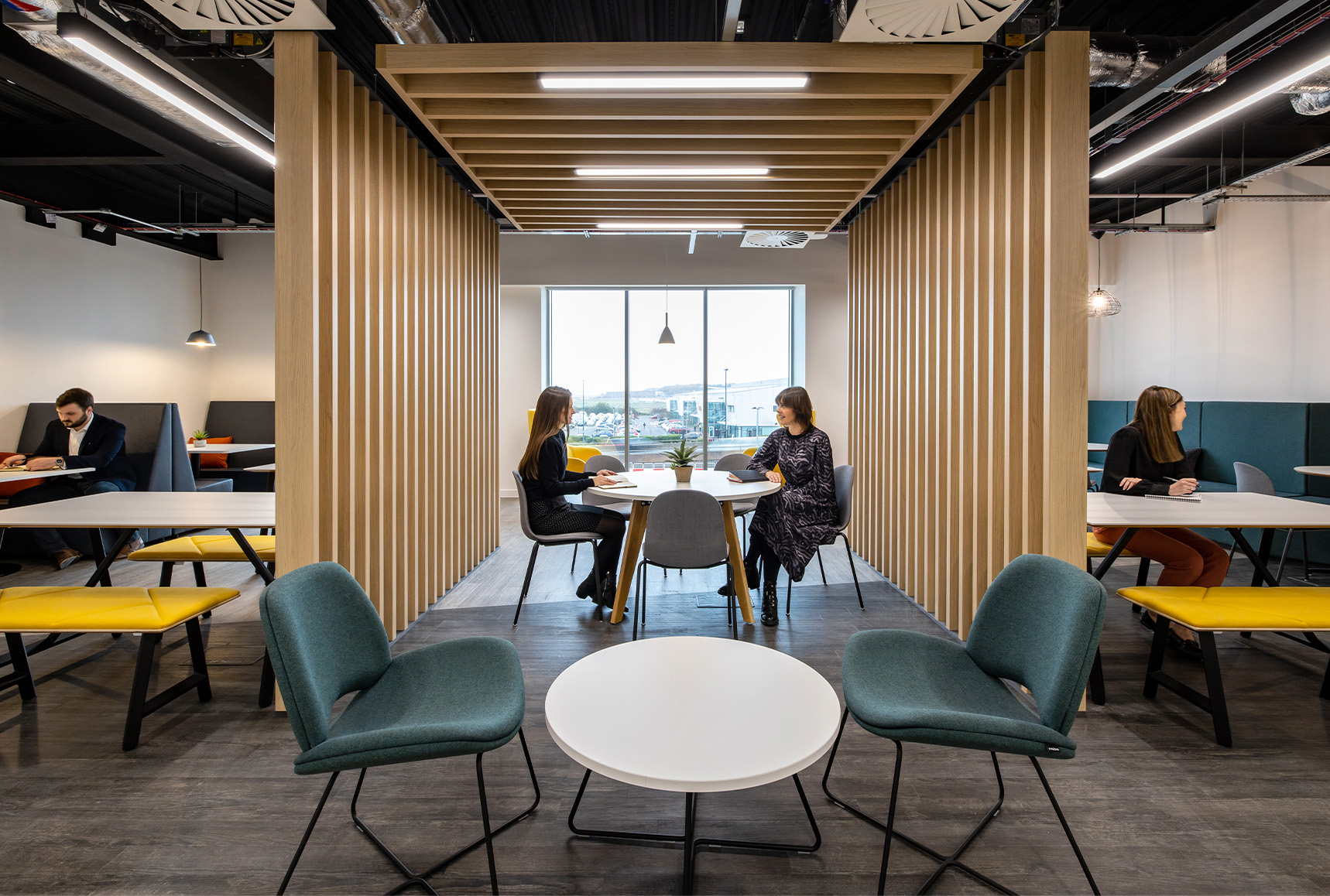
Building the talent pipeline: a dual approach
Aerospace and defence companies are increasingly using a two-pronged strategy to find talent:
- National level: Offering competitive wages and high-tech roles to attract engineers from across the country. Highlighting the opportunity to work with cutting-edge technology can be a huge draw.
- Local level: Engaging in public-private partnerships to create talent ecosystems. This means investing in work-based learning programmes and apprenticeships, or partnering with local universities.
Apprenticeships, in particular, have seen a surge: Deloitte reports that the number of apprentices in advanced manufacturing tripled between 2021 and 2023, reaching almost 60,000. These programmes not only develop practical skills but also encourage retention by offering clear career pathways.
Yet, despite these efforts, only 16% of companies collaborate with specialised STEM workforce providers, which could be an untapped opportunity to fast-track talent development.
Not just new grads: upskilling and retention matter too
While attracting fresh talent grabs headlines, retaining and developing existing employees is just as important. The sector faces a retirement cliff, but also a need to keep mid-career staff updated with emerging tech.
Rapid advances in AI, automation, and digital tools mean ongoing training is vital. Companies investing in continuous learning initiatives see benefits in productivity, innovation, and employee engagement. And this is where workplace design can play a powerful role.
Take GKN Aerospace’s Global Technology Centre in Bristol. The building is designed as a hub for lifelong learning and collaboration, not just a place to ‘do the work’. On the ground floor, a large auditorium backs onto a hands-on “hack space” for STEM students and partners to experiment and share ideas. The second floor includes breakout desks and a library to support flexible learning, while two generous training rooms with folding walls create adaptable, welcoming spaces for workshops and skill-building.
These facilities aren’t afterthoughts – they’re core to GKN’s goal of building a resilient, future-ready workforce. The whole space encourages interaction between emerging talent and experienced engineers from GKN’s 50+ partners. It’s upskilling made tangible.
The space also supports wellbeing and sustainability, with natural materials, abundant daylight, biophilia, and even heated lockers for cyclists. It’s a long-term investment in people, not just infrastructure.
Retention also ties into culture. Aerospace and defence firms that prioritise:
- flexible working policies,
- wellbeing support,
- inclusive leadership,
- and gender diversity (especially getting more women into engineering and leadership roles)
find it easier to keep great people – and get better results.
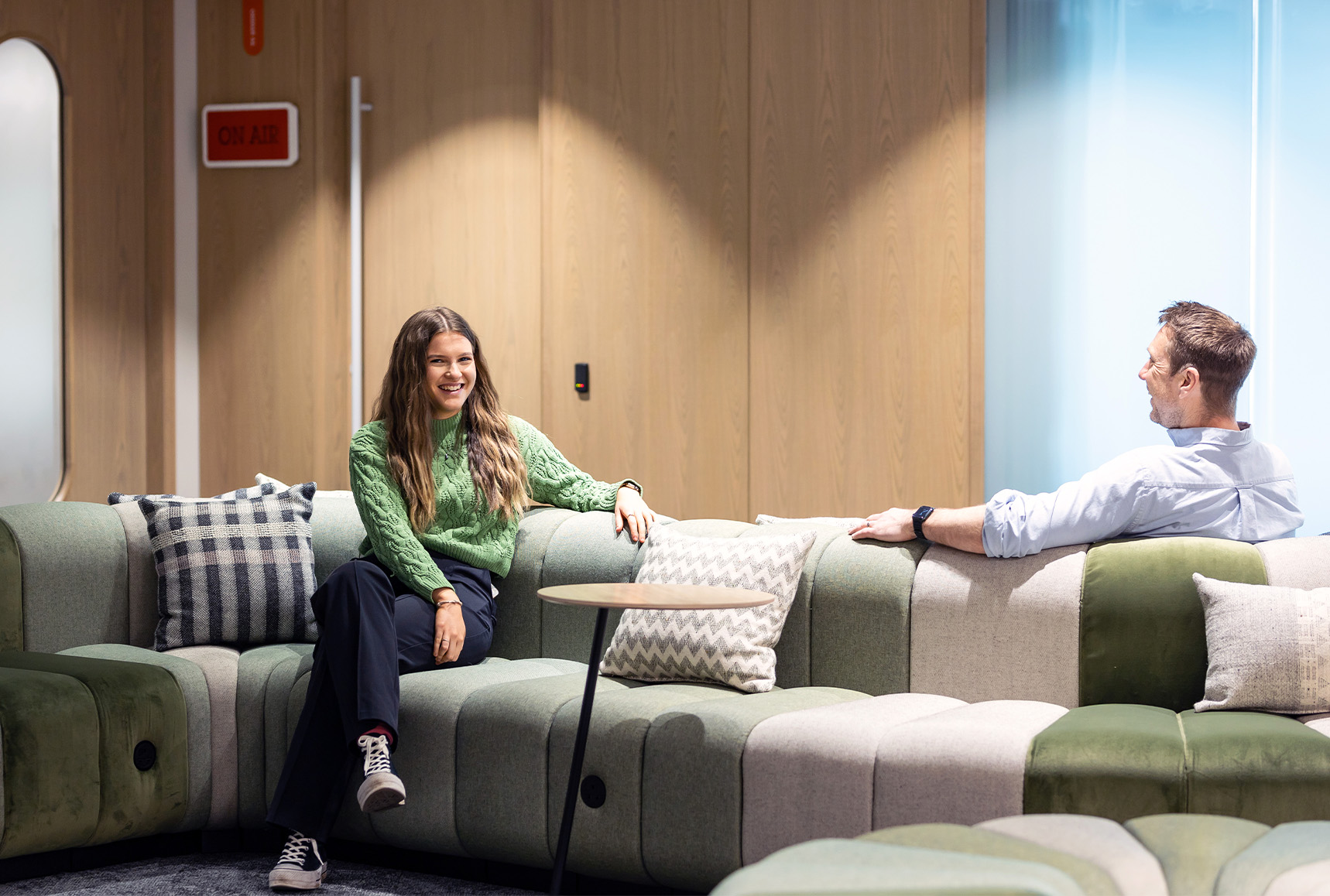
Diversity is a business imperative
To truly compete in the global talent market, aerospace and defence companies need to embrace diversity in all its forms: gender, ethnicity, cultural background, and neurodiversity.
- Women remain underrepresented in engineering and technical roles. Actively recruiting and supporting women through mentoring, flexible policies, and inclusive career paths helps build a broader talent pool. Ensuring the physical workplace is designed with women in mind also helps, eg. including private pumping spaces for breastfeeding mothers. Increasing female representation in the C-suite isn’t just a box-ticking exercise, reports show it drives better decision-making and innovation.
- People of colour and those from different cultural backgrounds bring fresh perspectives and innovative problem-solving approaches – essential in a sector reliant on complex design and forward thinking.
- Neurodiversity, including people with autism, ADHD, dyslexia, and other cognitive differences, is often overlooked. These individuals often possess unique skills in attention to detail, pattern recognition, and creative thinking that are invaluable in aerospace and defence roles. Adjusting recruitment processes and workplace environments to be more inclusive can unlock this talent. Learn more about how to design a neurodiverse-friendly workplace here.
Companies that prioritise diversity don’t just meet social expectations, they outperform competitors. Diverse teams are proven to be more innovative, agile, and better at risk management, all crucial for sectors where the stakes are high. And when paired with inclusive, thoughtful workplace design, it creates a culture where all kinds of talent can innovate together and work more productively.
Looking ahead
The future depends on getting this right. Aerospace and defence are strategic industries vital to national security and economic growth. To secure that future, companies need not only top-notch facilities but also workspaces that appeal to a new generation of talent while retaining and upskilling existing staff.
At Interaction, we design secure, people-focused workplaces for aerospace, defence and nuclear firms across the UK. If you’re facing these challenges, let’s talk about creating a workplace that attracts and keeps the best talent your sector deserves.
